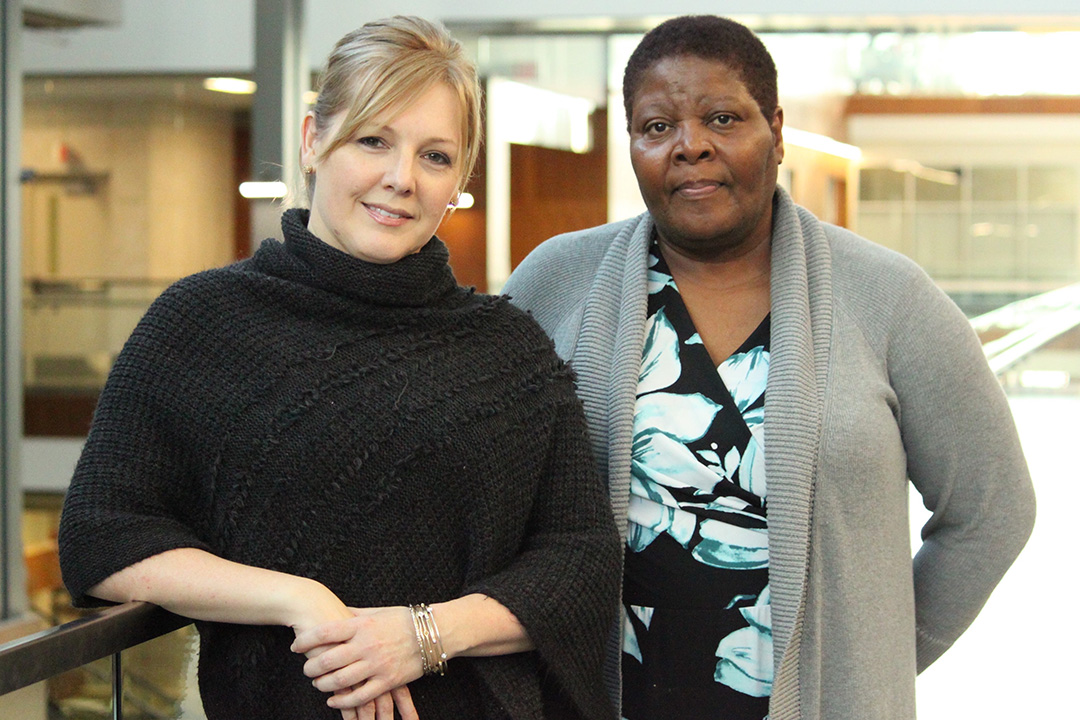
Bringing career readiness into the classroom at USask
As students move from the classroom into the workplace, some are quickly discovering employers are looking for more than just a diploma or degree.
By Sydney Gobeil and Meghan SiredEmployers expect their team to demonstrate core career competencies such as professionalism, leadership and collaboration, according to Kimberly Matheson, career counsellor in the Student Employment and Career Centre (SECC) at the University of Saskatchewan (USask).
Matheson is one of a number of SECC team members who have been working with USask instructors over the last four years to determine the needs of employers and the best practices for bringing career readiness—which Matheson defines as acquiring the skills required to successfully transition into the workplace—into the classroom.
“Integrating career readiness into curriculum has enabled students to develop connections between what they are learning in the classroom and their career direction and employability, which can be vital upon graduation,” said Matheson. “We’ve been working alongside instructors and bringing in our expertise around career readiness to enrich their course content—looking at their syllabus and seeing ways that we can complement and support what they’re teaching.”
Matheson said the level at which each instructor wants to integrate career readiness is completely up to them, as staff at the SECC are able to tailor their time and focus in the classroom to suit each individual course.
Over the last four years, more than 930 students in the Colleges of Arts and Science, Pharmacy and Nutrition, Graduate and Postdoctoral Studies, and the Edwards School of Business have taken classes in which career readiness concepts were intertwined in the other learning material.
“For students, some of the most important outcomes that we want to see are an understanding of the value of career readiness competencies and that they possess, or can develop, and articulate these competencies,” said Matheson.
The eight career readiness competencies the SECC team explores with students are professionalism and work ethic, oral and written communication, teamwork and collaboration, critical thinking and problem solving, digital technology, leadership, global and intercultural fluency, and career management.
Prior to introducing career readiness concepts into curriculum, the SECC looked to post-secondary institutions in the United States, Australia and the United Kingdom to see how career readiness was being approached as a partnership between instructors and career services.
“We spent quite a bit of time looking at best practices and digging into how other universities were approaching it and how they went about designing, developing and evaluating that type of content into courses,” said Matheson.
After conducting their research, the SECC team worked closely with the Gwenna Moss Centre for Teaching and Learning (GMCTL), and began to explore how best to create a model for career readi-ness and curriculum integration at USask. From there, staff at GMCTL connected the SECC with faculty who were interested in supplementing their courses.
Matheson said these partnerships formed the basis for the integration of career readiness partnerships across several courses at the university and has been an excellent experience with powerful outcomes for both students and instructors.
Matheson and her manager, John Ault, were given the opportunity to share this work in January at Cannexus, Canada’s largest bilingual career development conference.
“There is definitely a growing appetite for these types of partnerships and a new appreciation for their value,” said Matheson. “There was a lot of interest in our session and it gave us an opportunity to have great conversations with other institutions and allow the University of Saskatchewan to shine.“
Dr. Carol Henry (PhD), assistant dean of nutrition and dietetics, has seen firsthand the impact of the SECC’s work in regards to career readiness for students.
Four years ago, the College of Pharmacy and Nutrition wanted to restructure the NUTR 466 course, to provide students with practical applications for what they had learned in class. It was at this point that they began working with Matheson, who introduced them to the SECC’s approach to career readiness.
The course now better prepares students for their practicum and gives them the chance to find out what their own strengths are. Henry has heard nothing but positive feedback from students.
“It has been a great experience, and we really look forward to continue to build on that experience,” said Henry.

